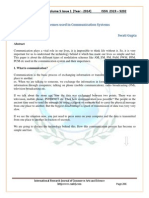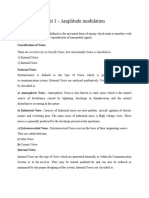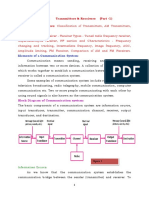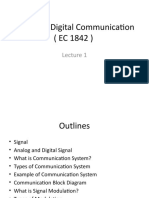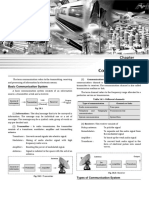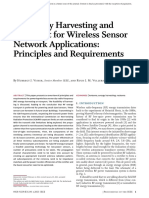0% found this document useful (0 votes)
50 views10 pagesAM Communication
The basic electrical communication system consists of a transmitter, channel, and receiver, facilitating the transmission of analog or digital signals. Key components include input and output transducers, which convert signals to and from electrical energy, and modulation techniques that encode information for effective transmission. Communication can be categorized into wired and wireless channels, with various modulation methods such as amplitude, frequency, and phase modulation used to optimize signal transmission.
Uploaded by
Ratyb OjaCopyright
© © All Rights Reserved
We take content rights seriously. If you suspect this is your content, claim it here.
Available Formats
Download as PDF, TXT or read online on Scribd
0% found this document useful (0 votes)
50 views10 pagesAM Communication
The basic electrical communication system consists of a transmitter, channel, and receiver, facilitating the transmission of analog or digital signals. Key components include input and output transducers, which convert signals to and from electrical energy, and modulation techniques that encode information for effective transmission. Communication can be categorized into wired and wireless channels, with various modulation methods such as amplitude, frequency, and phase modulation used to optimize signal transmission.
Uploaded by
Ratyb OjaCopyright
© © All Rights Reserved
We take content rights seriously. If you suspect this is your content, claim it here.
Available Formats
Download as PDF, TXT or read online on Scribd
/ 10




































